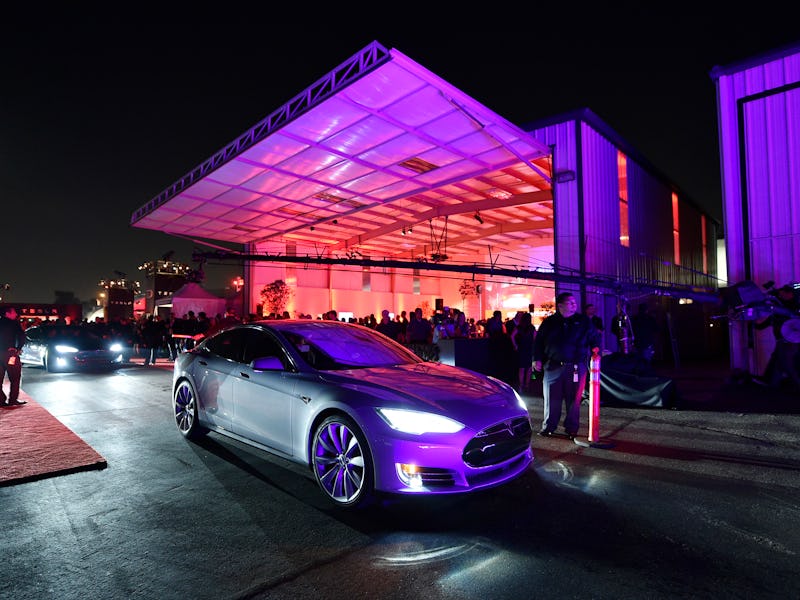What Does Tesla's First Autonomous Crash Tell Us About Its Self-Driving Readiness?
Maybe Tesla should slow it down a little.

Tesla’s autonomous technology might not be as smart as the company says it is. A Tesla Model S owner in Utah named Jared Overton claims that his car started itself and then drove into a trailer parked directly in front of it, smashing the front window. Tesla, for its part, disputed the claim after it took a look at the car logs. The company instead blames Overton for starting the Summon feature on his phone.
Regardless of who is at fault, the incident shows that it’s not a good idea to ghostride the whip, even with today’s most advanced autonomous software under the hood. Fact of the matter is that Tesla jumped the gun by showcasing its autonomy in beta mode before the technology was ready for the wild.
“I think it behooves them to figure out what happened, what happened with the vehicle, address it,” Overton told KSL on Tuesday. “Just fix it.”
KSL reports that Tesla responded to Overton’s claims with a letter that read:
Tesla has reviewed the vehicle’s logs, which show that the incident occurred as a result of the driver not being properly attentive to the vehicle’s surroundings while using the Summon feature or maintaining responsibility for safely controlling the vehicle at all times.
Tesla’s claim is logical. Overton may very well have accidentally summoned his Model S — it only takes a few taps on the app to get the car moving — but that’s not the vision of autonomy people get excited about. Autonomous vehicles are supposed to fix the flaws of mistake-prone humans, not accentuate those flaws.
Tesla went on to provide a statement to KSL that excused Summon not stopping, because Summon “may not detect certain obstacles, including those that are very narrow (e.g., bikes), lower than the fascia, or hanging from the ceiling.”
New products are exciting. They get the people going. It’s hard to imagine people hyping Tesla as much were the company directing all its focus on making a superior version of the products it already has instead of flashing fancy over-the-air upgrades and new models. Sad, but true.
Tesla has to drum up interest in everything it does to prove to investors that people care. The company needs to scream that it is “New! Exciting! Cool!” because that’s what builds brand loyalty and (eventually) drives sales. Yet “New! Exciting! Cool!” can become dangerous when it means releasing something that isn’t ready.
Tesla's new and cool factor is undeniable.
Self-driving cars are coming. That point is past dispute, it’s just a matter of when. Nearly every major car manufacturer is working on getting something out in the market — Google and Fiat Chrysler have their autonomous minivans, and Lyft and GM have their autonomous Chevrolet ride-share. There’s a reason why those companies don’t have something out right now though: because they don’t want to be disastrously ahead of the times.
So what does Overton’s fender bender mean for Tesla owners everywhere? For one, it shows that people shouldn’t put blind trust in Tesla’s early autonomy. Additionally, it casts shade on Tesla’s other far-out claims — i.e. its expected production levels. There’s a reason why car companies relentlessly test their products before selling them: because mistakes can be deadly.
Tesla is making huge strides in autonomy with both Summon and Autopilot. But perhaps it shouldn’t test the first steps of those strides by selling a product that isn’t ready.